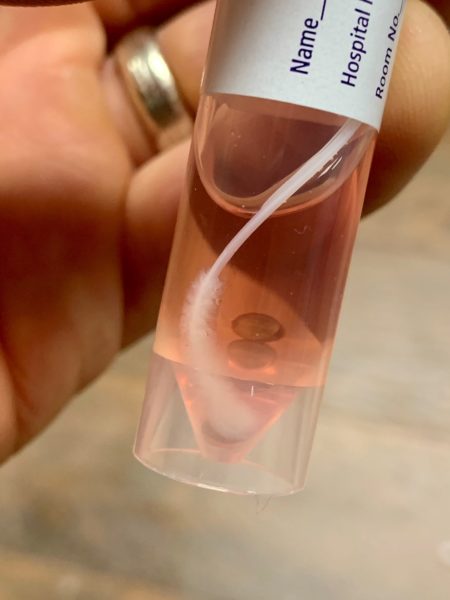Following years of work developing diagnostics for infectious diseases including malaria, tuberculosis, dengue, chikungunya and zika, Nicholas Adams and Mindy Leelawong, both research assistant professors in the biomedical engineering laboratory headed by Rick Haselton, have developed a streamlined diagnostic approach for COVID-19 that renders RNA extraction – a bottleneck in the diagnostic process – unnecessary.
The research was published in the Journal of Medical Virology on June 23.
Virtually all testing for COVID-19 involves the amplification and detection of viral ribonucleic acid (RNA). However, in order to detect this RNA, it is typically first necessary to extract and purify it from patients’ specimens. As the need for COVID-19 testing skyrocketed, these RNA extraction reagents were among the most important products to fall in critically short supply, threatening testing capabilities across the United States. With this urgent need in mind, Adams and Leelawong took an idea that omits these steps entirely to Jonathan Schmitz, assistant professor of pathology, microbiology and immunology, who initially developed and implemented COVID-19 testing for the Vanderbilt Health System.
Together, this team fine-tuned and applied a ‘non-extracted’ amplification technique to several hundred samples both positive and negative for COVID-19, observing very successful results. Overall, the approach detected 95% of positive results accurately (95% sensitivity) and 100% of all negative results accuracy (100% specificity). Because of the method’s simplicity and these favorable performance characteristics, the protocol could theoretically be expanded to a massive scale to address the evolving challenges of the COVID-19 pandemic. This would include in resource-challenged settings around the world, where such reagents can be limited and limiting even under normal circumstances. “It is quite exciting to be working on something that can have such an immediate impact,” Adams and Leelawong acknowledge. “As researchers, the impact we can make is usually five or ten years in the future, but this has the potential to make differences in the lives of people even sooner.”

“I was thrilled at the prospect of not needing an RNA extraction step,” said Schmitz, also medical director of the Vanderbilt University Medical Center molecular infectious diseases laboratory. “To have an extra level of security for unprecedented supply-chain breakdowns is a tremendous advantage. Elegant but practical solutions are precisely what are needed in these challenging times.”
Before the COVID-19 outbreak, Adams and Leelawong shared the goal of working on the kind of infectious diseases that are more prevalent in low resource settings. They pivoted to the development and testing of an influenza diagnostic device in partnership with virologists at the Tennessee Department of Health. The department receives thousands of patient influenza samples each year, making them a terrific collaborator because they can provide ample material on which the team could use to hone their test.
Adams and Leelawong’s molecular testing device, as with most others, identifies the presence of specific RNA or sometimes DNA sequences in a patient sample. Typically, after a nasal swab is taken from a patient RNA must be purified or ‘extracted’ to remove any contaminants that could inhibit the next step – polymerase chain reaction (PCR) – the process that detects the RNA. PCR has been the uncontested gold standard of diagnostic testing for the past three decades because of its specificity and sensitivity. None of this had presented any problems in the diagnostic world until a global pandemic caused a shortage of RNA extraction kits. The kits, which were already expensive, suddenly became difficult to procure.
Its high cost of time, resources and money were what encouraged Adams and Leelawong to look for ways to make PCR testing work with unprocessed (dirty) samples and less expensive equipment. They deployed a new test, called adaptive PCR first developed by Adams and Haselton in 2017, which showed that the diagnostic process could work just as well without the RNA extraction process. “We put together a special cocktail of reagents for conducting PCR that is tolerant of the salts, nasal debris, and other contaminants in a raw patient sample,” said Adams. While testing this new PCR device for influenza over the last several months, they made an interesting observation. “Every time we compared our new technology with standard PCR technology in the lab, we realized that influenza diagnostic tests could be done without RNA extraction.”
The researchers are working on improving the sensitivity of their results in order to bring them closer to 100% by further optimizing their reagent mix and have been seeking partners to implement and scale up testing.
This work was supported in part by the NIH National Human Genome Research Institute (R42HG009470).